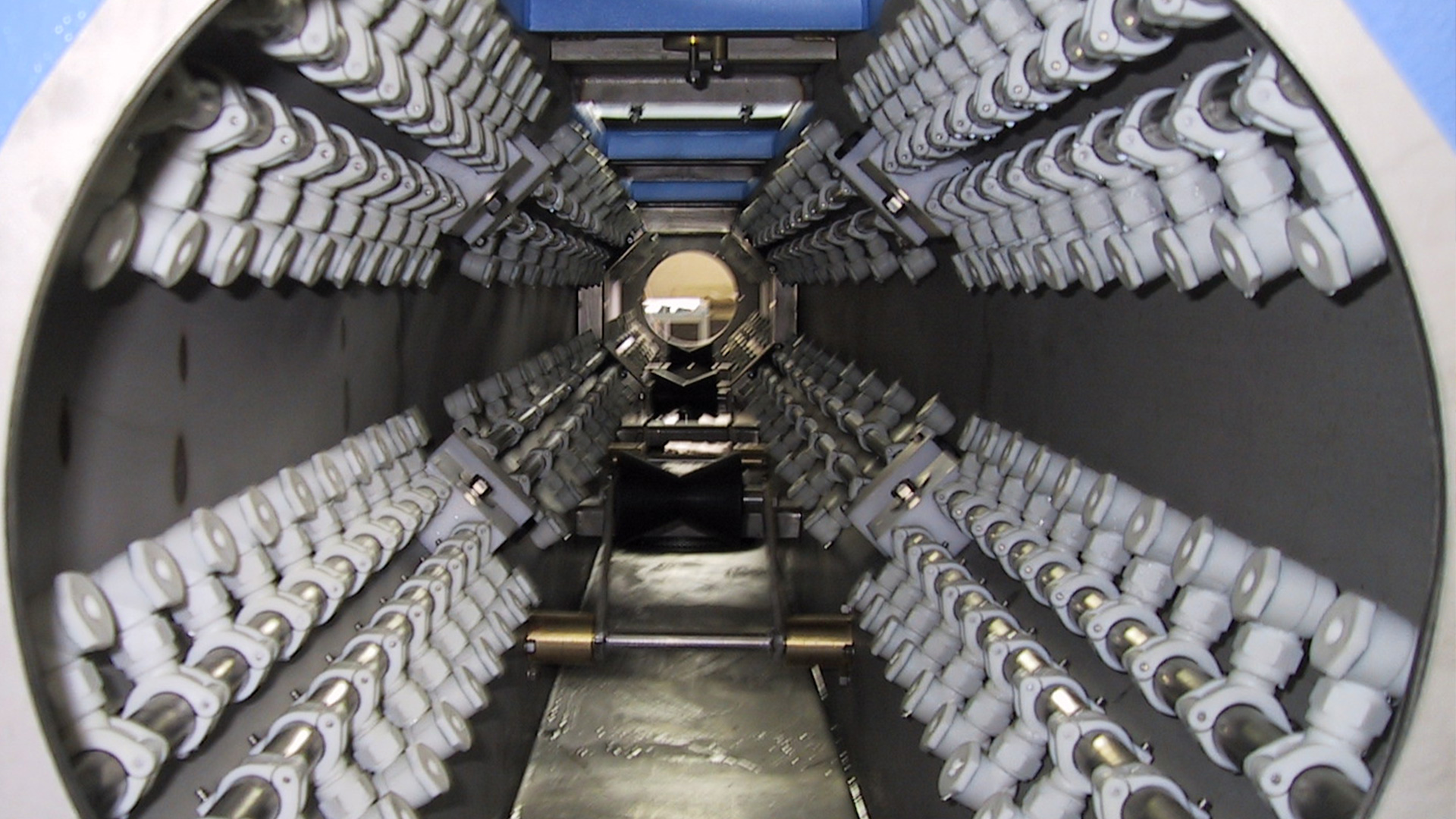
Extrusion Vacuum Tank Spray Nozzle?
Extrusion vacuum tank nozzles are critical components in the extrusion process, particularly in the production of pipes and tubes. They play a crucial role in efficiently cooling and shaping extruded products.
These nozzles are designed to deliver a precise and controlled spray of water onto the hot, extruded material as it passes through the vacuum tank. This rapid cooling helps to:
Solidify the material: The rapid cooling helps to quickly solidify the extruded material, ensuring dimensional stability and preventing deformation.
Improve surface finish: The fine water spray can help to smooth out the surface of the extruded product, resulting in a better finish.
Control cooling rate: The flow rate and spray pattern of the nozzles can be adjusted to control the cooling rate, which is important for achieving the desired material properties.
Key features and considerations for extrusion vacuum tank nozzles:
Material: Nozzles are typically made of durable materials like stainless steel or brass to withstand the high pressures and abrasive conditions.
Spray pattern: The spray pattern can vary depending on the specific application, with options like full cone, hollow cone, or flat fan patterns.
Flow rate: The flow rate of the nozzles is crucial for achieving the desired cooling effect.
Durability: Nozzles need to be resistant to wear and tear, especially in applications involving abrasive materials.
Maintenance: Regular cleaning and maintenance of the nozzles are essential to ensure optimal performance and prevent clogging.
By carefully selecting and maintaining extrusion vacuum tank nozzles, manufacturers can optimize the cooling process and produce high-quality extruded products with consistent dimensions and surface finishes.

1. Operating Principle
An extrusion vacuum tank spray nozzle is a critical component in extrusion processes for plastics, rubber, and similar materials. It is used to shape and cool these materials to desired specifications. The nozzle sprays a liquid (usually water) in a fine mist onto the extruded material within a vacuum chamber, facilitating rapid cooling and shaping.
2. General Technical Specifications
| Feature | Values |
| Nozzle Type |
Extrusion Vacuum Tank Spray Nozzle
|
| Droplet Size |
20-100 microns (varies based on nozzle and pressure)
|
| Operating Pressure |
2 bar – 10 bar (depends on nozzle design and application)
|
| Flow Rate |
1 L/min – 2000 L/min (varies based on application)
|
| Spray Pattern |
Fine spray, uniform liquid distribution
|
| Spray Angle |
30° - 90° (commonly 45°-60°)
|
| Fluid Type |
Water, water-based mixtures, cooling fluids
|
| Outlet Velocity |
5 m/s – 15 m/s (depends on nozzle type and fluid properties)
|
| Material Selection |
Stainless steel, PVC, PVDF, PTFE (for chemical resistance and corrosion resistance)
|
| Connection Type |
Flange, threaded, industrial connections
|
| Operating Temperature |
-10°C to 150°C (depends on material and fluid)
|
| Corrosion Resistance |
High (especially stainless steel and plastic models)
|
| Applications |
Plastic and rubber extrusion, cooling and shaping, film production
|
3. Sizing and Performance
Flow Rate Calculation:
The flow rate of an extrusion vacuum tank spray nozzle is determined by the vacuum level of the chamber and the required fluid flow. Generally, the fluid flow rate can be calculated using:
Q = C_d * A * √(2 * ΔP / ρ)
Where:
Q = Flow rate (L/s)
C_d = Discharge coefficient (varies based on nozzle type and size, typically 0.8 – 0.95)
A = Nozzle outlet area (m²)
ΔP = Pressure difference (bar)
ρ = Density of the fluid (kg/m³)
Droplet Size:
The droplet size at the nozzle outlet typically ranges from 20-100 microns. Higher pressure results in smaller droplets and a finer spray, ensuring more uniform cooling.
Spray Angle:
Spray angles for extrusion vacuum tank nozzles usually range from 30° to 90°. Angles of 45° or 60° are common.
Outlet Velocity:
The outlet velocity depends on the operating pressure and can range from 5 m/s to 15 m/s. Higher pressure results in higher velocity.
4. Advantages
Uniform Cooling: Provides even cooling across the material surface, enhancing extrusion quality.
Efficient Vacuum: Maintains the shape and uniformity of the extruded material in a vacuum environment.
Durability: Long-lasting with options like stainless steel or plastic for corrosive environments.
Energy Efficiency: Achieves high performance with lower energy consumption due to efficient fluid distribution.
Versatility: Suitable for various materials and processes.
5. Applications
Plastic and Rubber Extrusion: Rapidly cools extruded materials. Used in film production, tubing, and profiling.
Cooling and Shaping: Provides uniform cooling and shaping for extruded materials.
Film and Sheet Production: Rapidly cools the surface of hot films and sheets.
Vacuum Cooling Systems: Effectively cools extruded products in vacuum chambers.
Advanced Chemical Production: Used in extrusion processes for chemical materials.
6. Material Selection and Durability
Nozzle materials include:
Stainless Steel (SS 304, SS 316): Resistant to high temperatures, pressure, and corrosion.
PVC, PVDF, PTFE: Chemically resistant and lightweight plastics.
Brass and Cast Iron: Used for lower pressure applications but may have shorter lifespans.
7. Sizing and Selection
Nozzle sizing depends on fluid type, temperature, cooling rate, and flow rate. Proper selection ensures uniform fluid distribution and optimal process efficiency.
Conclusion
Extrusion vacuum tank spray nozzles play a crucial role in improving the quality and efficiency of extrusion processes. Proper nozzle selection and sizing are essential for achieving desired results.
https://nozzle.net/news-detail/vacuum-and-cooling-tanks-in-pipe-extrusion-lines.html
extrusion vacuum tank nozzle











